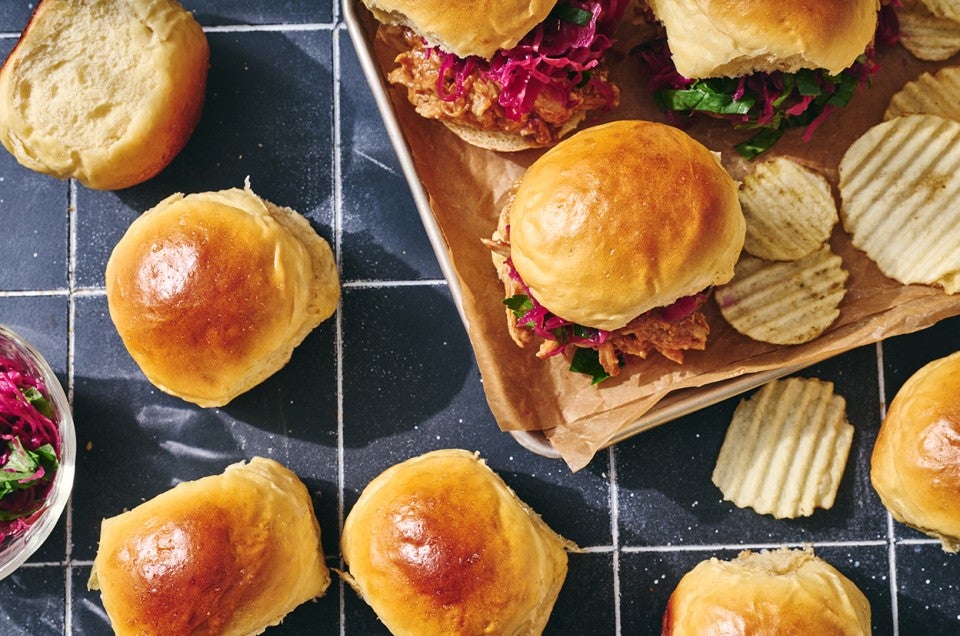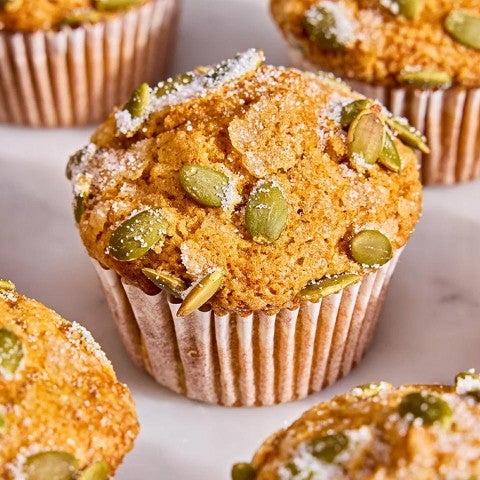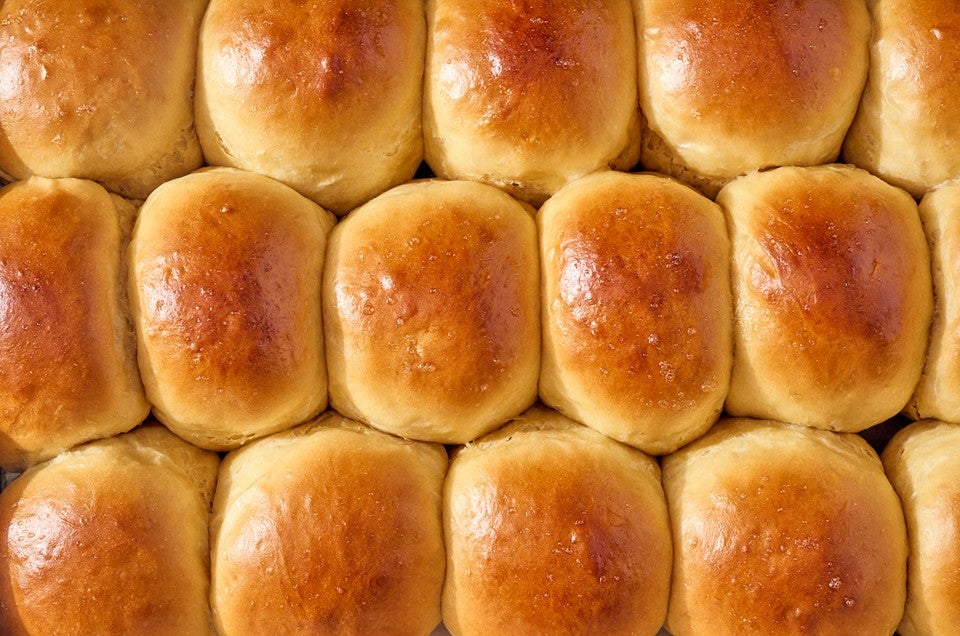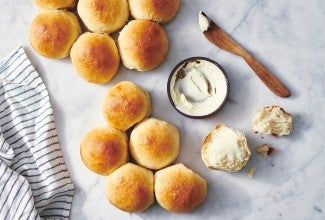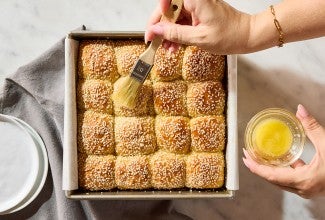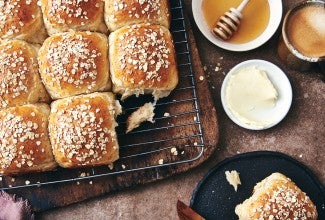-
To make the sponge: Weigh your flour; or measure it by gently spooning it into a cup, then sweeping off any excess. In the bowl of your stand mixer or the bucket of your bread machine, combine the sponge ingredients. Allow the sponge to rest for 15 minutes.
-
To make the dough: Add the pineapple juice, butter, brown sugar, eggs and yolk, and vanilla, mixing until well combined.
-
Whisk together the remaining flour, potato flour, and salt before adding to the liquid ingredients.
-
Mix and knead until the dough is cohesive and smooth; it'll be very sticky at first. If you're using a stand mixer, beat with the flat beater for about 3 minutes at medium-high speed; then scrape the dough into the center of the bowl, switch to the dough hook, and knead for about 5 minutes at medium speed. It may have formed a very soft ball, but will probably still be sticking to the bottom of the bowl. If you're using a bread machine, simply let it go through its entire cycle. If you find the dough isn't coming together, add 1 to 2 tablespoons flour.
-
Lightly grease the mixing bowl or a large (8-cup) measuring cup; round the dough into a ball and place it in the bowl or measuring cup. Cover, and let rise until very puffy, about 1 1/2 to 2 hours. If you're using a bread machine and the dough hasn't doubled in size when the cycle is complete, simply let it rest in the machine for another 30 to 60 minutes.
-
Lightly grease a 9" x 13" pan.
-
Gently deflate the dough. Divide it into 16 equal pieces, by dividing in half, then in half again, etc. Round each piece into a smooth ball. Space the buns evenly in the pan.
-
Tent the dough gently with lightly greased plastic wrap. Let the dough rise in the pan for 1 hour, until it's nicely puffy. Toward the end of the rising time, preheat the oven to 350°F.
-
Mix the reserved egg white with 1 tablespoon cold water, and brush some onto the surface of the rolls; this will give them a satiny crust.
-
Bake the rolls for 20 to 25 minutes, or until the internal temperature reads 190°F on a digital thermometer.
-
Remove the Hawaiian rolls from the oven, and after a few minutes, turn them out onto a cooling rack. Serve warm.
-
Storage information: Store leftovers, well wrapped, at room temperature for several days; freeze for longer storage.
